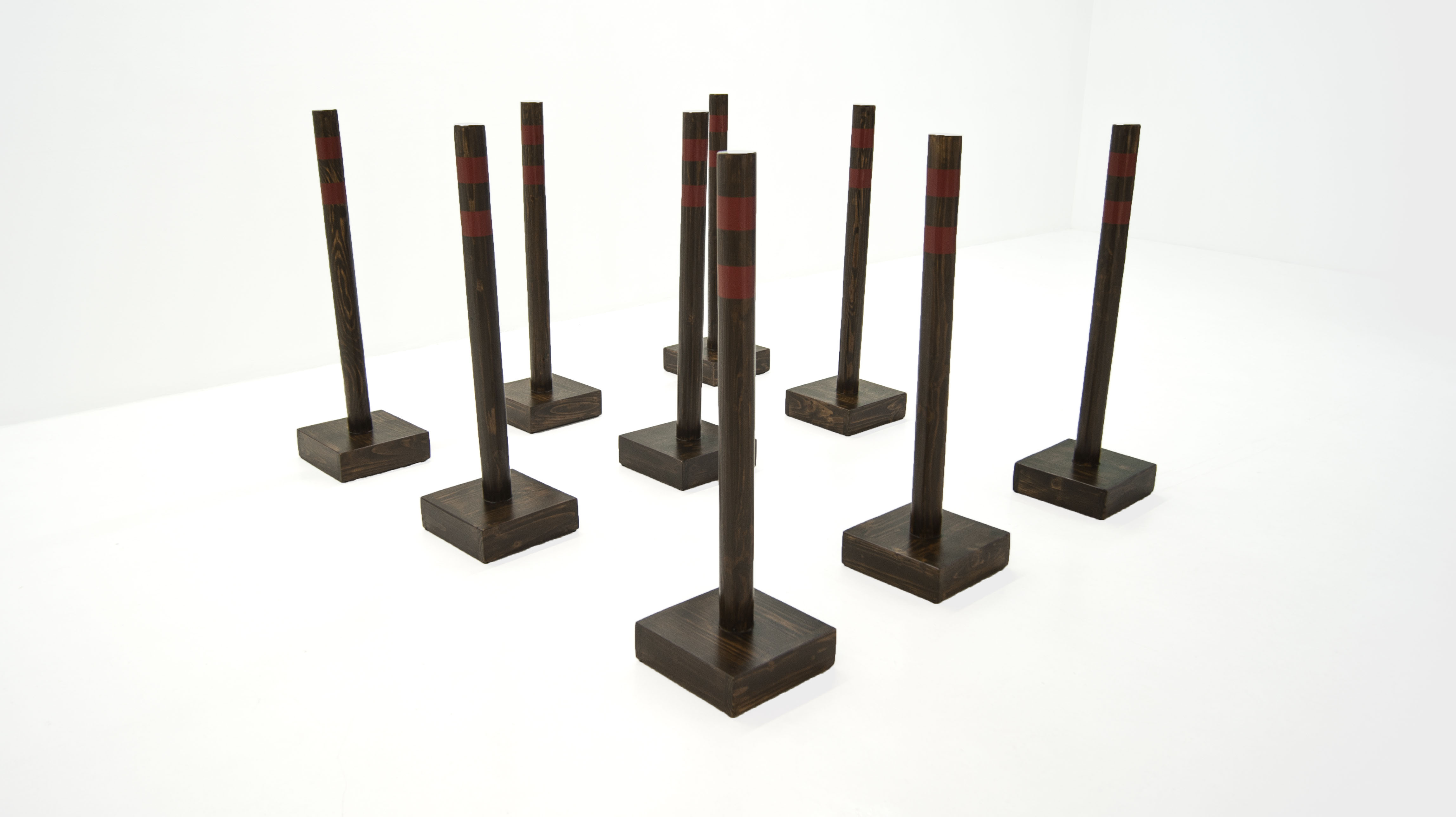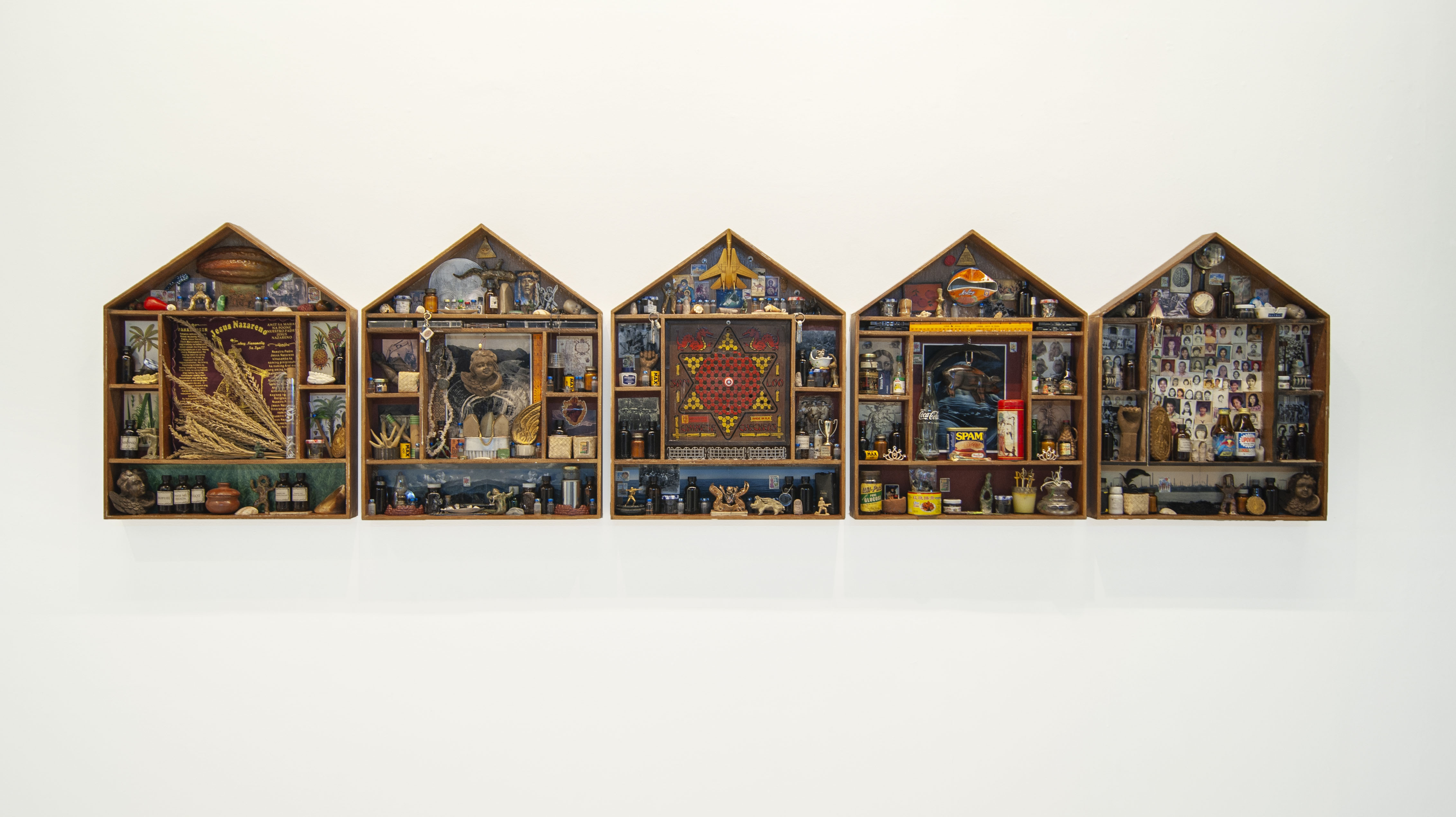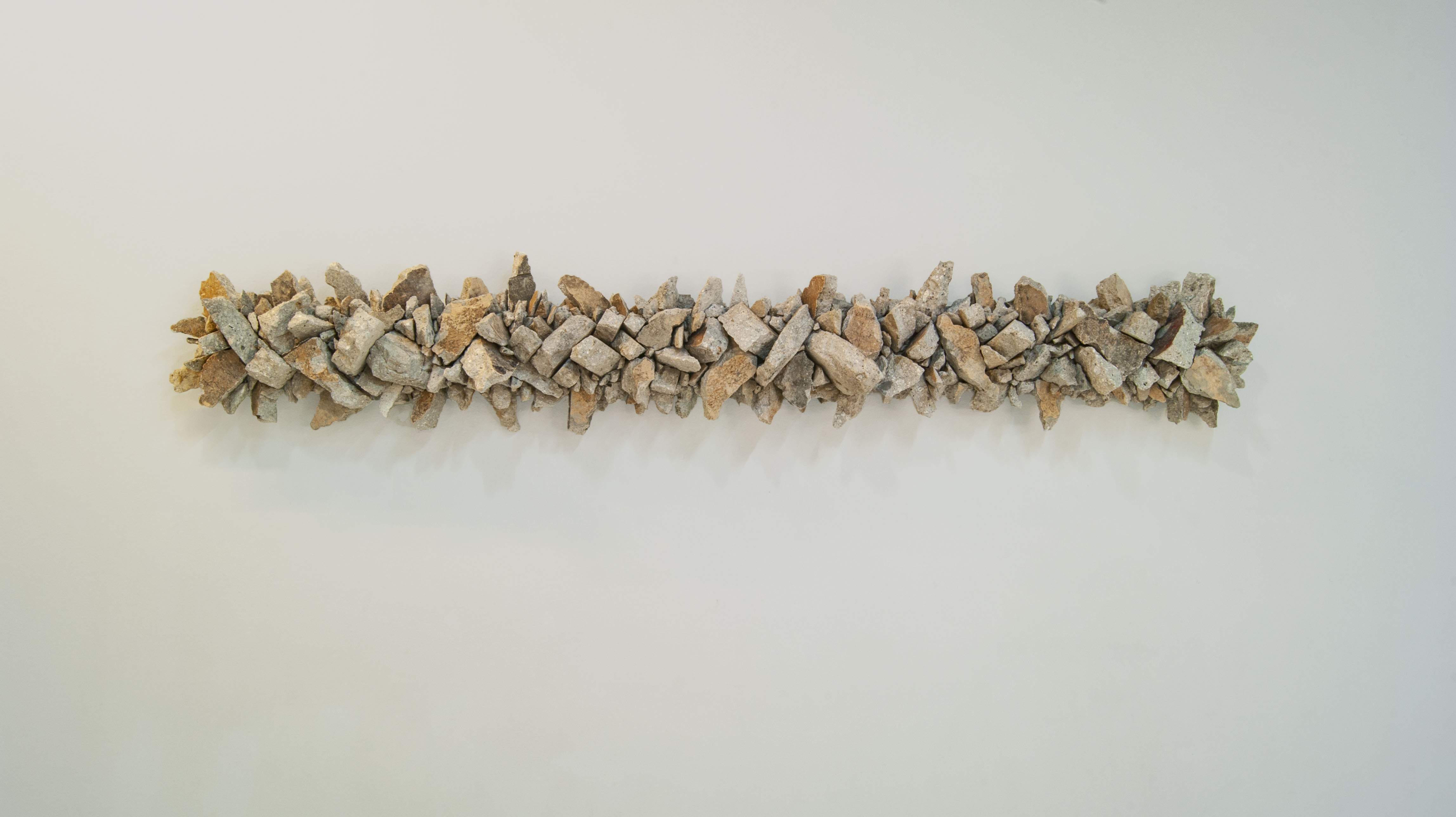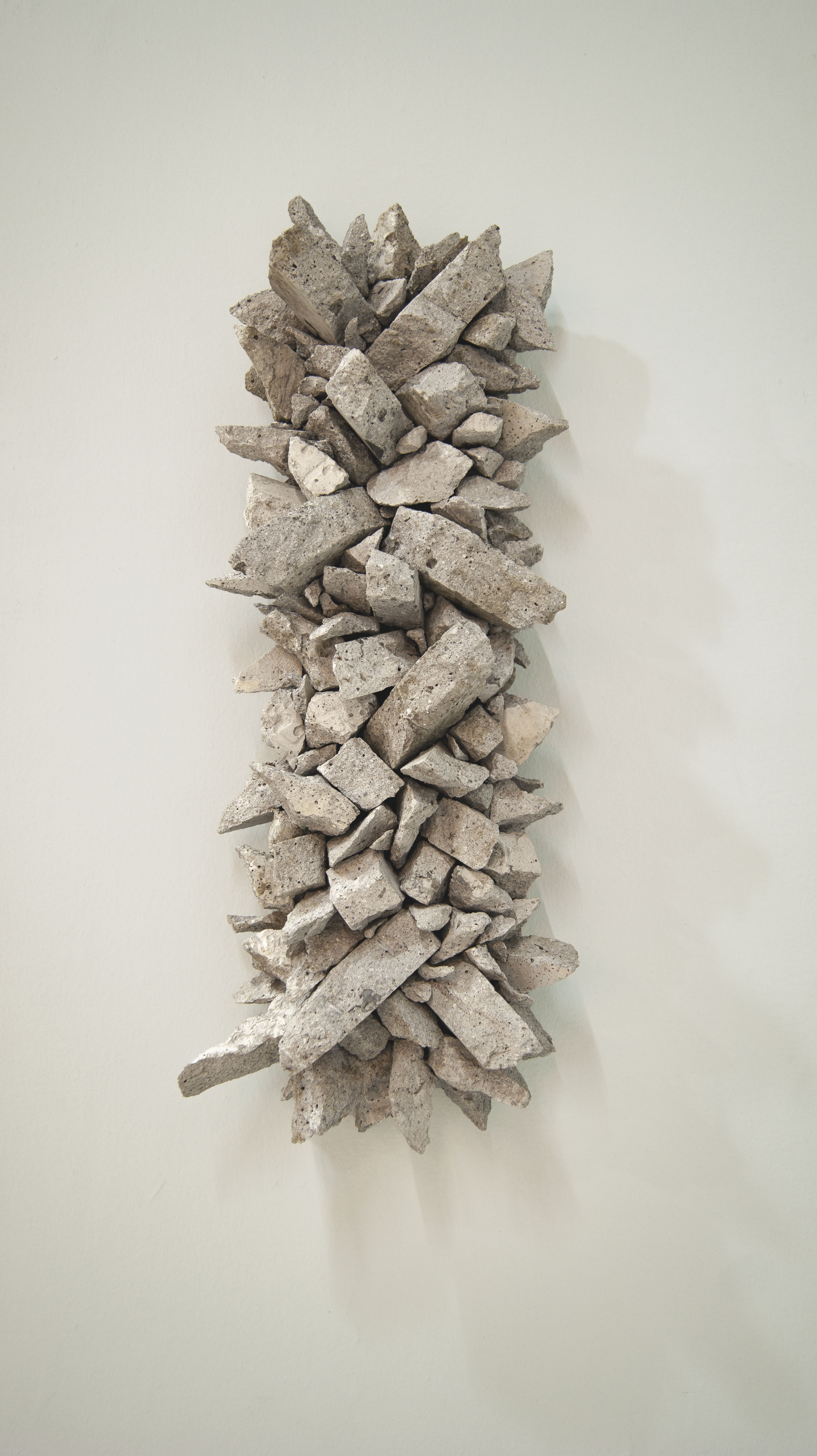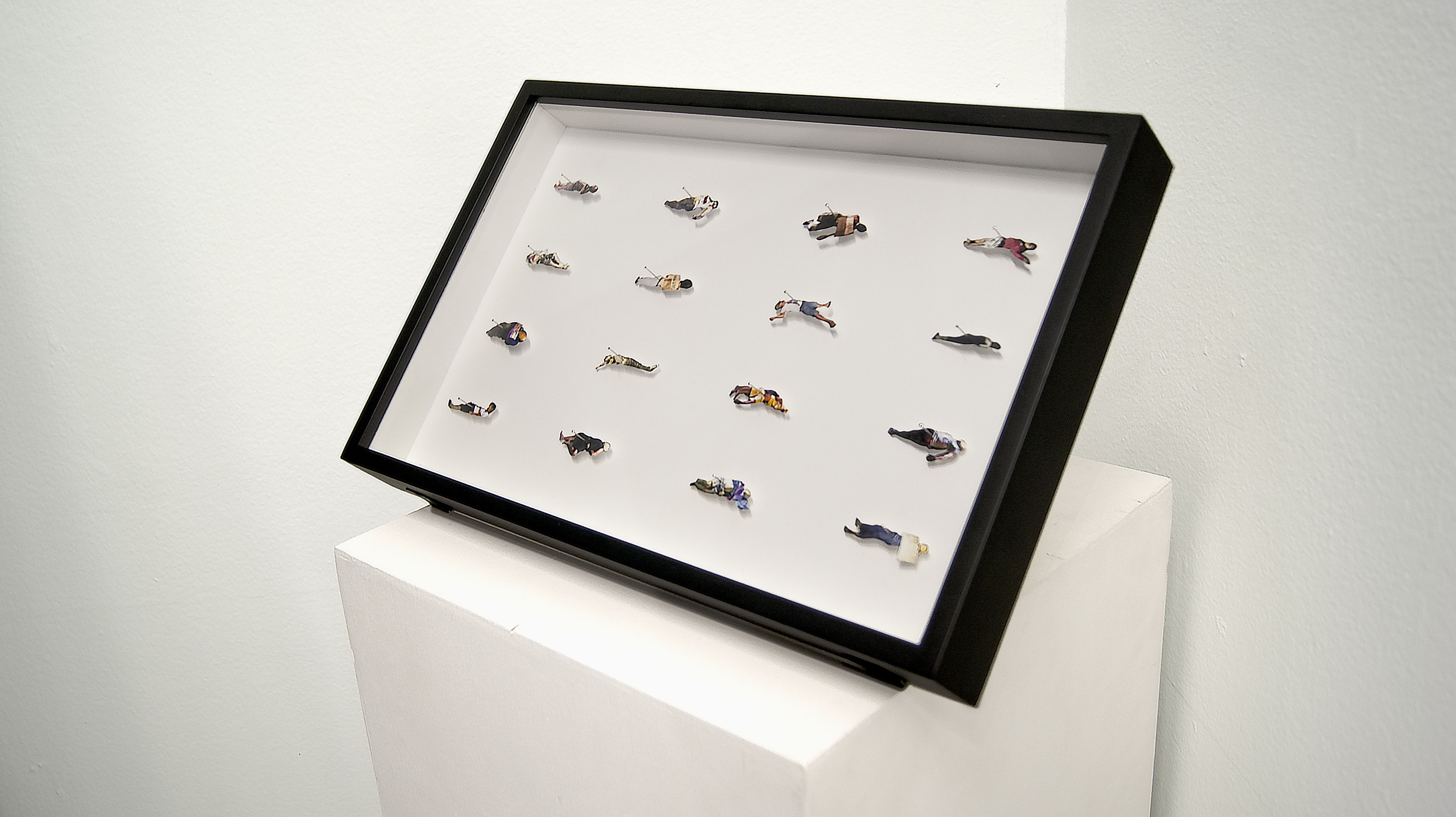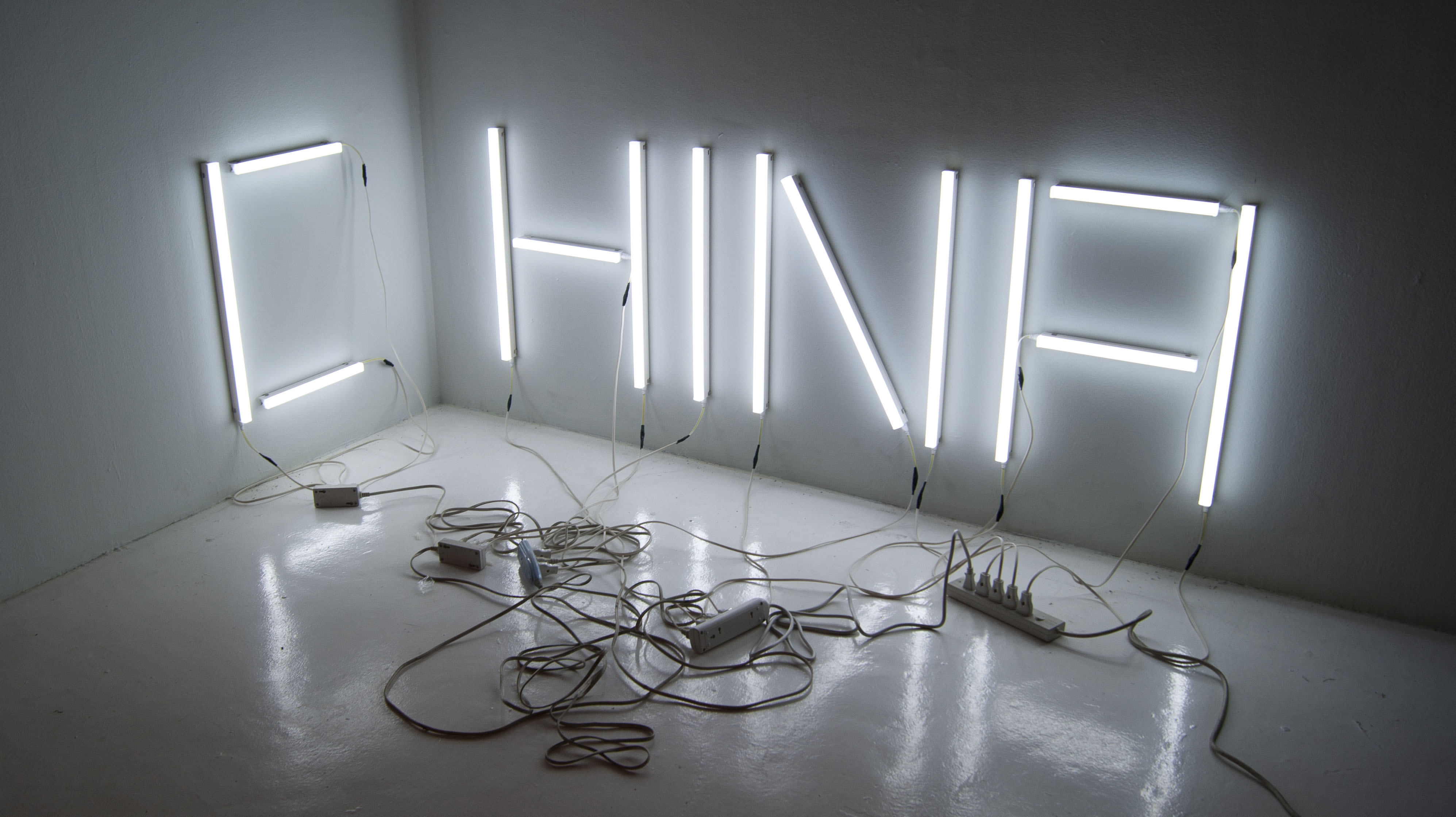Although the early beginnings of the concept of “no man’s land” can be traced variously from medieval England a thousand years ago and later used in the First World War to describe abandoned territories outside the jurisdiction of the church and/or state, the connotative dereliction of this phrase can be simultaneously applied to contemporary times, and its location can be anywhere.
Artists Francis Commeyne, Cian Dayrit and Cris Mora insist that differently-calibrated forms of social inequality, spatial dispossession, territorial alterities and structural violence in the everyday are the barriers that create immovable borders in our lives. The “No Man’s Land” exhibit aims to engender this nomenclature of discursively violent practices in the Philippines to show how ordinary material culture such as the deployment of the tarpaulin can be repurposed to illuminate pervasive divides and disputes of quotidian life, as seen in Commeyne’s Monument. It also examines the aestheticization of the commonplace, as well as the banalization of the decorative functionality of repurposed art. Like the ubiquities of the trapal, other scrap materials used in the construction of urban infrastructures such as metal bars, PVC pipes and other commonplace objects are themselves microgeographies of differently-scaled borders that mark, delineate, and ultimately shape what is public and private, inside and outside, formal and makeshift, temporary and permanent. The eponymous no man’s land exhibit highlights the social construction of what constitutes exclusivity and what is discarded and abandoned.
Mora’s clinical assemblage of cadavers that bears the brunt of institutionally-mandated slaughter in the name of nationhood, reminds citizens that uneven and highly skewed power relations reside among the political elite. The corporealities of these corpses are the remaining remnants of persons who once lived either under a cruel republic of the past or a much crueler republic of the present. In Mora’s 16 Dead Bodies in the Philippines, the normalization of dead bodies in public spaces—found in the urban nightscapes or in a literal no man’s land around the country—bears a striking similarity to global malaise: from the precarious spaces inhabited by refugees, the occupied and sieged territories of Palestine, and the torture prisons of Guantanamo and Abu Ghraib. It is reminiscent of a scene in Danis Tanovic’s film No Man’s Land (2001), where a news journalist who witnessed a bloody confrontation between two soldiers in the titular trench refused to allow the cameraman to film the scene of the carnage, saying “a trench is a trench; they’re all the same.”
The biopolitical border that separates life from death among victims of extra-judicial killings in the Philippines came about because of the current administration’s enactment of what Foucault identifies as new forms of discipline, control and domination brought about by the fascination, nay fetishization of the modern.
Dayrit’s Terra Rationarium reconfigures the microcosmic lifeworlds of a diorama, of a terrarium, to create a theater of cruelty whose scalar dimensions range from the highly local to the supranational and bound together by the exploitative practices of hegemonic neo-imperial powers. The assembled gallery of horrors includes a cross section of a chamber marked as mineral extraction, monocrop agriculture, cheap labour, militarization, and market of surplus—each encapsulating different forms of slavery, or what geographer Jason Moore terms as external and internal frontiers that snake their ways into our “web of life”. Described by postcolonial scholars as science laboratories and tourist destinations, the islands in our archipelagoes serve as inexhaustible supplies of raw, extractable materials for the modernist occupiers, explorers and colonizers who saw nature as exploitable all in the service of capital.
Whether it is termed Global South, Third World, or Majority World, the natural, cultural and social wealth of these countries similar to the Philippines are extracted, exploited and appropriated daily and continuously, sometimes by the local people themselves. Again, all in the service of capital.
These provocative thought pieces from Mora, Dayrit and Commeyne reexamine and reanimate the tropes of frontiers and territories, of constructivist notions of exclusion and inclusion, the dialectical and constitutive dance of meaning and meaning-making, of the interchangeability of the material and intangible objects, and of the entanglements of life, death and afterlife.
“No Man’s Land” is a snapshot of becoming, co-becoming and even un-becoming. It is not just a border that we are uncomfortable to cross, but a border that already crossed us.
Joseph Palis is an assistant professor at the UP Department of Geography and Center for International Studies. He is a co-editor of the Pivot Series devoted to Geographies of Media from Palgrave-Macmillan. Dr Palis teaches graduate classes on countercartographies, geohumanities, and cinematic geographies and a member of the Philippine Geographical Society and the American Association of Geographers.
-
In the Philippines, the world of art seldom intersects with the world of the common Pinoy. Very few have been raised with art as a part of their lives. Even fewer grow up with the time or means to study it.
Those of you who are now in this gallery know of the joy of standing before an art piece, the thrill of picking apart the artist’s thoughts, and perhaps the satisfaction of finally understanding. Do you remember a time when you, too, had shrunk in the presence of an artwork, stared for hours only to draw a blank, and wondered if the person next to you could smell the poseur?
Such is the sense of alienation that art brings to those who were not exposed to it. Many less fortunate Filipinos dismiss the appreciation of art as a game reserved for the privileged. At some point in our nation’s story, someone drew a line in the sand separating art from the people.
This line of separation deepens further with every experience of suffering the poor go through which they are sure the rich do not. Where does art fit in when a mother has nothing to feed her baby but the last gulp of their instant coffee? Who has time for it when one’s neighbors are falling dead one after the other, leaving them conflicted as to whether or not this is a good thing?
Resentment of the “other” has at times become so potent that some of the masses completely shun any voice attempting to define their plight. It is for this reason that No Man’s Land is necessary. With this exhibition, artists Francis Commeyne, Cian Dayrit, and Cris Mora approach the proverbial line in the sand with the intent to cross it.
They bring across two messages: first, that while they cannot fully comprehend the pain of the poor, they, too, as Filipinos, feel the trembling that reverberates through the nation; second, that this thing called art, the perceived plaything of the elite, should speak for the people, too.
Commeyne’s “Monument” takes notice of the arbitrariness in the ownership of space, and how the imposition of borders and boundaries are always in the hands of the powerful. This is apparent in times of conflict like the siege of Marawi City - homes of the Meranao were taken over by the military in the interest of defeating the terror threat, and in an instant, the houses the people built became off-limits to the people who built them.
“No Man’s Land,” Commeyne’s sculptural installation, while on the surface are clever symbols of the often-illegal “occupation” of public space, could also bring to mind the conflict in the West Philippine Sea, with China indiscriminately redrawing the map of the world to its own benefit.
Dayrit’s “Terra Rationarium” puts the Philippines into a rather haunting perspective – the country broken down to its many elements – faith, its people, its resources – and sorted into shelves of a cupboard like mere ingredients, arranged according to the preference of the unseen hands doing the cooking.
Mora’s “C_HINA,” calls out a truth that needs to be said with unapologetic clarity - that for whatever gains they perceive to be in the offing, the Philippine government has weakened its own stance of sovereignty and is now parroting the Chinese line, consuming the country’s own resources in the process.
“16 Dead Bodies in the Philippines” sanitizes and aestheticizes images of extrajudicial killings, precisely to illustrate the fact that even lining up the dead in neat rows and separating the bodies from their stories do not make the killings any less gruesome… or right. On the contrary, the very act of cleaning makes it all the more chilling.
At a time when journalism and the straightforward presentation of facts has been coming under attack, when deliberate misinformation has been weaponized, and when discourse between opposing sides has served more to destroy than to understand the other, art like in No Man’s Land could provide new space for this conversation to keep going. Perhaps with more art retaking its role as a tool of resistance, its relevance will transcend more boundaries, resonate in more hearts, and trample on lines in the sand until they are no more.
Chiara Zambrano is a Correspondent of the ABS-CBN Broadcasting Corporation, creating news pieces and documentaries on war, conflict, and the Filipino people’s search for lasting peace. She finished her MA in Journalism at the Konrad Adenauer Asian Centre for Journalism and is now taking up MA Documentary by Practice at Royal Holloway, University of London under the Chevening Scholarships. She is among the many Filipinos who did not grow up with art but has since seen its capacity to serve the people.


